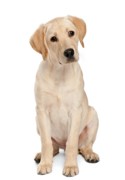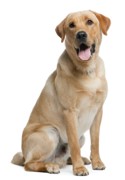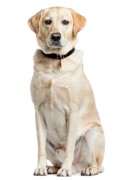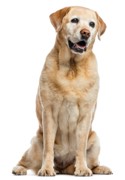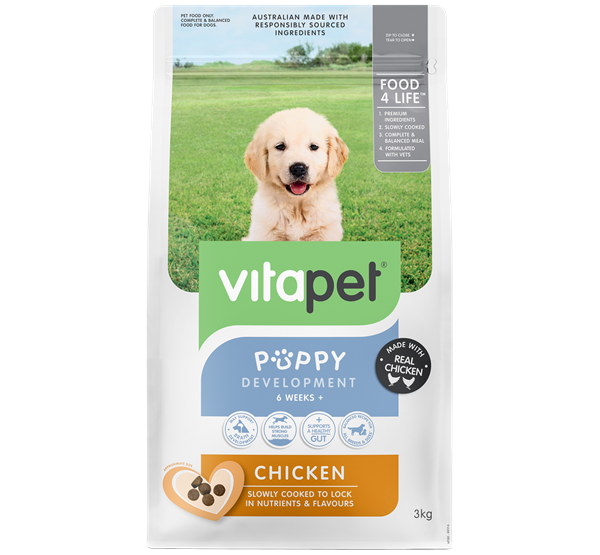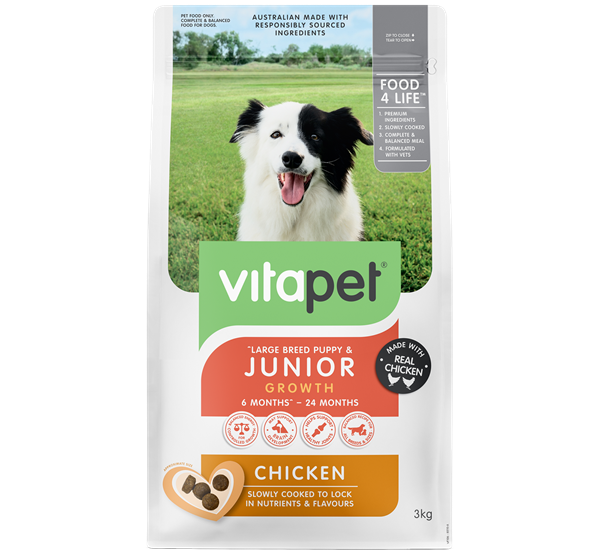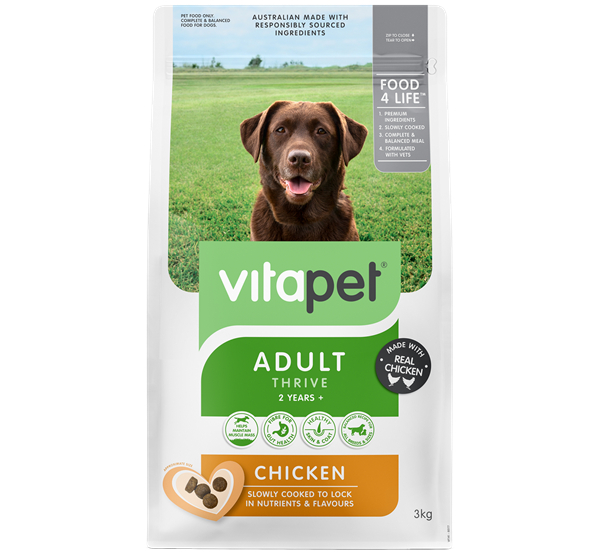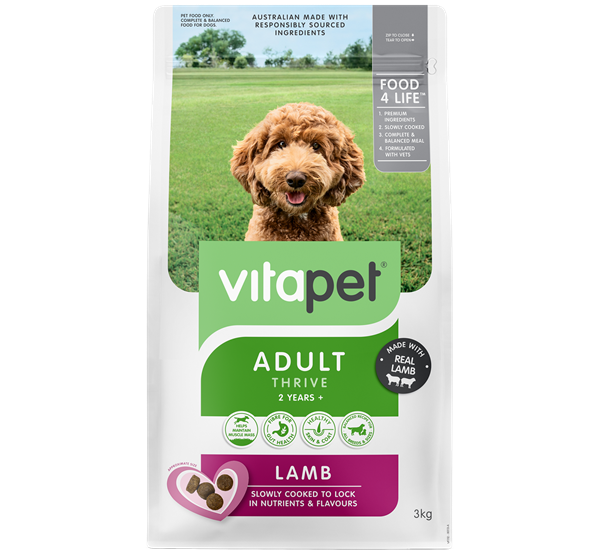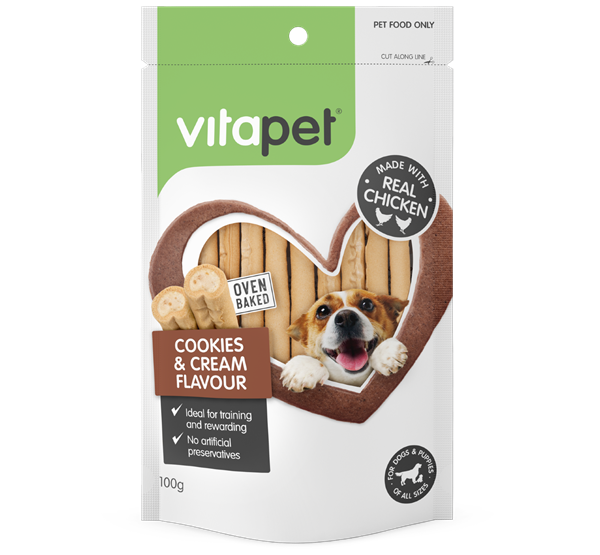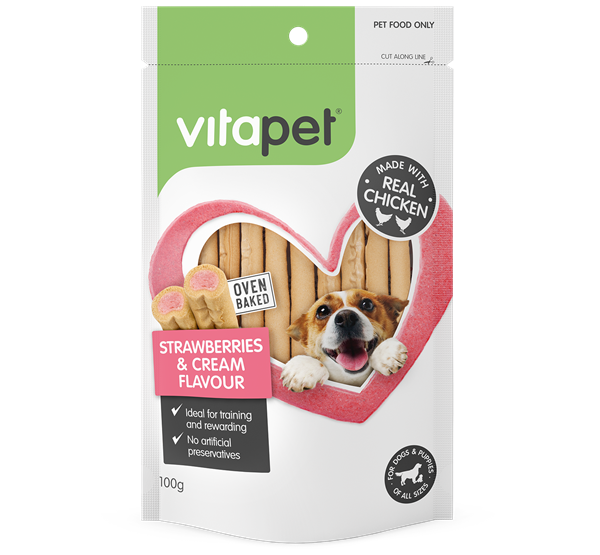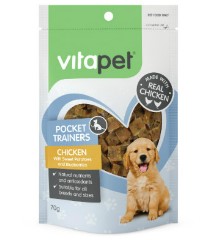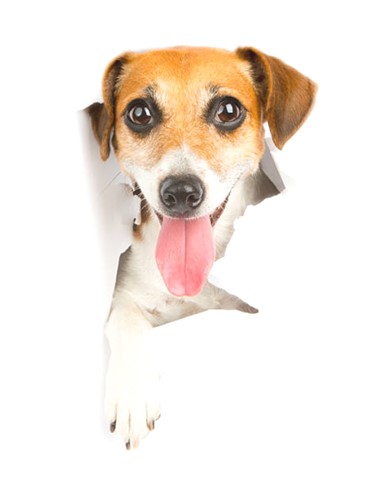Fat in dog food: an essential nutrient.
Most people think fat is all bad. But is that truly the case?
In actual fact, fat is an energy dense nutrient, providing dogs of all ages with fuel for growth, maintenance and repair, supporting every-day activity and the healthy function of many body systems. Fats also serve to store and transport fat-soluble vitamins including Vitamins A, D, E and K. Too much or too little fat can be problematic. You have to get the balance right.
Fat comes from different sources.
Animal fats are derived from different animals. For example, beef tallow is derived from beef and lard is derived from pork. Other examples include fish oil and chicken fat.
Vegetable fats are extracted from plants including seeds (soybean oil, sunflower oil, flaxseed oil) or fruit (olive oil, coconut oil, nut-derived fats).
Fats supply essential fatty acids
Essential fatty acids (EFA) are polyunsaturated fatty acids that need to be incorporated into the dog’s diet because they are essential nutrients that cannot be synthesised within their bodies.
The two types of EFAs are omega-3 and omega-6 fatty acids.
1) Omega-3 fatty acids are typically found in sources like fatty fish (e.g. salmon, sardines), fish oils, chia seeds, linseeds, and canola oil. . Omega-3 fatty acids supports eye and brain development, encourages a healthy skin and coat, and help maintain healthy cartilage for strong, agile joints.
2) Omega-6 fatty acids are found in vegetable oils such as sunflower, safflower, soybean and animal fats. Omega-6 fatty acids play a crucial role in maintaining the health and integrity of the skin barrier.
Incorporating essential fatty acids in a dog’s diet is crucial for optimal health.
Bad vs good fats.
There are 4 main types of fats:
- Monounsaturated fats
- Polyunsaturated fats
- Saturated fats
- Trans fats
Healthy fats include monounsaturated and polyunsaturated fats derived from sources such as nuts, seeds, olives, eggs and oily fish. These fats positively contribute to overall wellbeing.
Unhealthy fats include saturated and trans fats such as butter, copha, lard, visible fat on meat and high fat processed meats (sausages, bacon, salami) and fried foods. Dogs should consume saturated fats in moderation and avoid trans fats due to the potential health risks.
Fat content affects taste.
It's no secret that a touch of fat can turn any meal into a delicious delight, and our furry friends seem to agree wholeheartedly. Dogs, being the food enthusiasts that they are, have a keen nose for those delicious fatty flavours. While maintaining a balanced diet is crucial, trying to go fat-free might just lead to a canine protest at dinnertime—a scenario that's bound to be frustrating to both dogs and their devoted owners!
The ideal crude fat content in dog food varies depending on factors like age, breed and activity level with most adult maintenance diets using a minimum of 10 –15% to ensure palatability.
Meat choice affects fat content.
Although chicken breast meat generally has a lower fat content than lamb, VitaPet adult dog foods balance these fat content differences to keep our adult lamb and chicken recipes relatively equal in fat content at 14%.
Ideal crude fat in dog food depends on life stage.
The Association of American Feed Control Officials (AAFCO) recommends the minimum fat content of dry dog food to be at least 5.5% for adults and 8.5% for puppies and pregnant or lactating dogs . It is important to note that these levels are the minimum levels for growth and not the ideal level.
The recommended ideal crude fat in dog food is 10-15% for adults and 15-20% in growing puppies (at the lower end for large and giant breed dogs). This ensures there is sufficient fat for taste as well as for the nutritional benefits of fat.
Fat in dog food is not responsible for canine obesity.
Contrary to popular belief, it is not the fat in dog food that is responsible for canine obesity, but overnutrition or too many overall calories compared to energy expenditure. It’s a simple maths equation! If the calories consumed exceed the calories burned, then the result = weight gain! So, be sure to feed the right quantity of food for your dog’s ideal weight rather than on a fill-the-bowl or ad-lib basis. If your dog is overweight despite this, consult with your vet to ensure there isn’t a medical reason for the weight gain and receive advice on suitable weight management strategies.
Too much fat in dog food can be a problem.
Low tolerance to dietary fat
Some dogs develop chronic diarrhoea because they have a low tolerance to fat in their diets. Simply switching these dogs to a low-fat dog food can result in normal poop within a few weeks! So, for some dogs with chronic or intermittent sloppy bowel motions, a food trial with a restricted fat diet may be helpful. If successful, an improvement will usually be seen within 3 weeks. Remember, before embarking on a diet change to treat diarrhoea, it is important to consult with your veterinarian to rule out other medical causes of diarrhoea through appropriate diagnostics tests such as blood and faecal analysis.
Pancreatitis
Unlike humans, a dog’s gastrointestinal system cannot handle a diet too high in fat. In fact, in some dogs, this can trigger a nasty cascade of events leading to pancreatitis. Pancreatitis is a severe inflammatory disease affecting the pancreas, which is the organ responsible for digestive enzyme and insulin production. Under normal circumstance, the digestive enzymes are activated once they reach the stomach. However, in the case of pancreatitis, the enzymes are activated too early, within the pancreas itself, leading to a painful and potentially life-threatening condition known as an acute abdomen.
High triglyceride level in the blood
Some dogs have elevated triglyceride levels in their blood, known as hypertriglyceridaemia, which can contribute to or be associated with diabetes and pancreatitis. If your dog’s blood test reveals elevated triglycerides, further diagnostic investigations may be recommended. In particular, a test to rule out Cushing’s syndrome might be suggested. Cushing’s syndrome can, in some cases, be linked to hypertriglyceridemia, and this connection is particularly observed in breeds like Miniature Schnauzers, though other dog breeds can also be affected.
In the above medical conditions, a dietary fat content of 10% or less is generally recommended. However, unless your vet specifically advises you to restrict your dog’s fat intake, there is no need to feed a low-fat dog food for healthy dogs.
To sum it up, the take-home message is that the overall nutritional balance is far more important than a low-fat diet and unless your veterinarian has specified a low-fat diet for your dog, there is no need to overly restrict the fat content.







